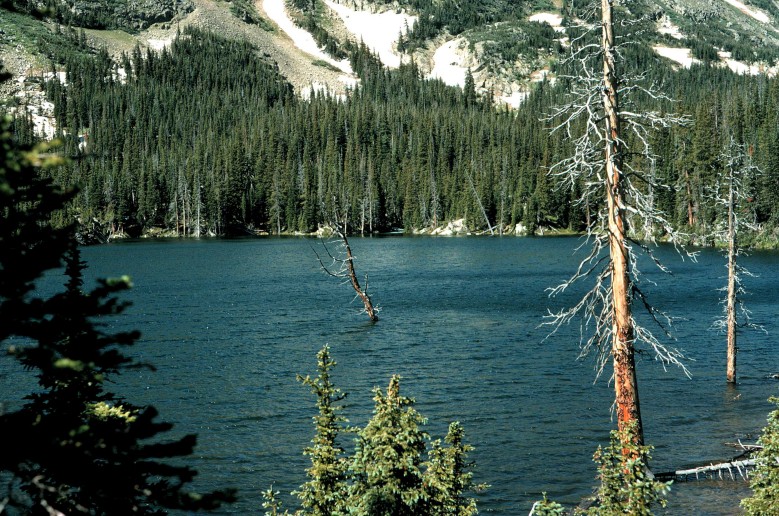forum
library
tutorial
contact

Scientists Review 'Critical Uncertainties'
in Columbia Basin Fish/Wildlife Research
by Staff
Columbia Basin Bulletin, February 5, 2016
|
the film forum library tutorial contact |

|
Scientists Review 'Critical Uncertainties'
by Staff
|
Many years of careful monitoring are typically required to confirm small but meaningful changes
in ecological outcomes from habitat restoration or supplementation projects.
 The Northwest Power and Conservation Council's Columbia Basin 2014 Fish and Wildlife Program calls for the Council to review ongoing research and revise the program's research plan.
The Northwest Power and Conservation Council's Columbia Basin 2014 Fish and Wildlife Program calls for the Council to review ongoing research and revise the program's research plan.
The current research plan lists 44 'critical uncertainties,' defined as 'important knowledge gaps about resources and the functional relationships that determine fish and wildlife productivity in the Columbia River ecosystem.'
To help update the research plan, the Council asked the Independent Scientific Advisory Board and Independent Scientific Review Panel to reexamine these uncertainties and to recommend revisions after reviewing progress achieved by current research, monitoring, and evaluation projects within the Council's fish and wildlife program.
In the report 'Critical Uncertainties for the Columbia River Basin Fish and Wildlife Program' issued this week, the following recommendations were developed during the ISAB and ISRP's evaluation. The intent is to provide help in revising the research plan and improve research within the fish and wildlife program during the next five years.
Excerpt from Executive Summary (page 4 of 11)
Theme 3. Tributary habitat:A key assumption of the Program is that improvements in tributary habitats will mitigate for reduced survival and growth caused by hydrosystem operations and passage through multiple dams and reservoirs. Three uncertainties related to tributary habitat were identified (only slightly modified from the 2006 Research Plan). Briefly, these uncertainties are whether restoring or reconnecting tributary habitat to expand productive capacity can
More has been learned about the effectiveness of tributary restoration at the reach scale than about its aggregate effects on fish and wildlife populations at the watershed scale. Few projects have been conducted at the spatial scale required to resolve these uncertainties, and none has proceeded long enough to measure the full effects of restoration in the context of multiple stressors. Indeed, current methods may be inadequate to measure effects at the basin scale. . . .
- mitigate for the loss of habitat capacity farther downstream or in the estuary or ocean,
- provide benefits for wild populations in the face of high densities of hatchery and non-native fishes, and
- increase resilience to buffer populations against extreme climate events and toxic contaminants.
Theme 4. Hydrosystem and passage operations:
The four uncertainties identified in the 2006 Research Plan remain relevant and were restated with minor revisions. Much progress has been made, but there is a continuing need for information about the impacts of hydrosystem flow and passage operations on all focal species (e.g., salmonids, white sturgeon, Pacific lamprey, and eulachon) to assess project compliance with BiOp-mandated targets and prioritize potential corrective actions. Of particular concern regarding salmonids are uncertainties about impacts on life history diversity due to variations in exposure to hydrosystem operations, the benefits of smolt transportation, and the effects of changing climate on fish passage through mainstem dams and reservoirs. Hydrosystem impacts on juvenile lamprey remain uncertain largely because of the lack of suitable tags.
. . .
Theme 8. Climate change:
The three climate change uncertainties listed in the 2006 Research Plan are still relevant, but were restated as two uncertainties. The first uncertainty focuses on how long-term climate trends will affect fish and wildlife. Progress has been moderate for predicting changes in temperature and flow, but low for predicting changes in ecosystems. Predictions of increased temperatures and reduced snow packs and summer stream flows suggest that fish kills, such as observed in 2015, are likely to increase in frequency, extent, and severity.
. . .
Theme 11. Fish propagation:
Hatcheries are widespread in the Basin, and consequently, it is critical to understand their effects on natural populations, both positive and negative. Despite significant progress by recent projects, the uncertainties related to fish propagation identified in the 2006 Research Plan are still relevant. To reduce overlap and redundancy, the seven uncertainties listed in the Research Plan have been recast into five uncertainties. The first uncertainty concerns the cumulative effects of basinwide hatchery production on natural populations given the various ways that hatchery fish can interact, both directly and indirectly, with natural origin fish. For example, it is unclear whether or not the cumulative impact of hatchery releases on density-dependent responses in natural populations is adequately considered in planning supplementation efforts.
learn more on topics covered in the film
see the video
read the script
learn the songs
discussion forum
